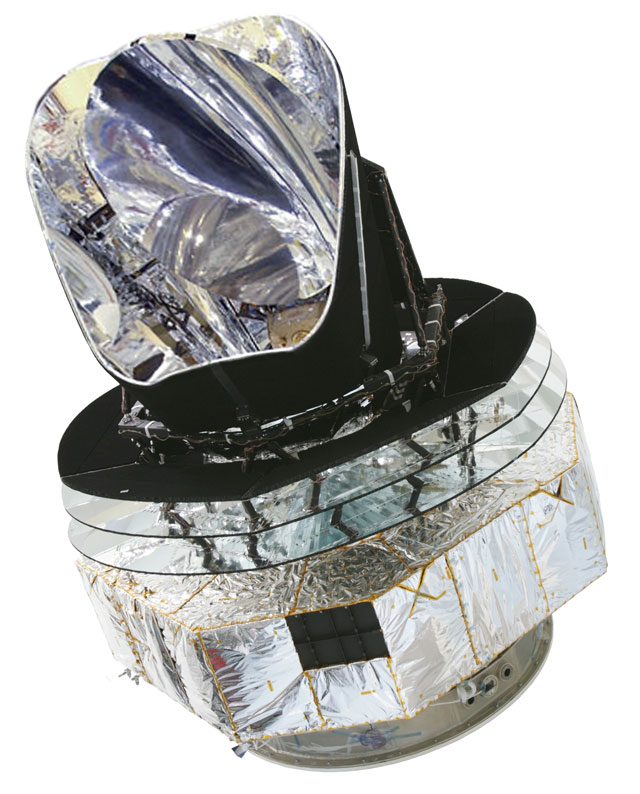

The Planck Mission
Planck is the third generation of space-based cosmic microwave background experiments, after NASA's Cosmic Background Explorer (COBE) and NASA's Wilkinson Microwave Anisotropy Probe (WMAP).It is also the third Medium-Sized Mission (M3) of European Space Agency's (ESA's) Horizon 2000 ScientificProgram. The basic scientific goal of the Planck mission is to measure CMB anisotropies at all angularscales larger than 10 arcminutes over the entire sky with a precision of ~2 parts per million. The modelpayload consists of a 1.5 meter off-axis telescope with two focal plane arrays of detectors sharing thefocal plane. Low frequencies will be covered by 56 tuned radio receivers sensitive to 30-100 GHz, whilehigh frequencies will be covered by 56 bolometers sensitive to 100-850 GHz. The spacecraft will take 6months to reach the L2 Lagrange point, from where it will map the full sky in another 6 months. The Planck Science Team site includes recent project news, a picture gallery, public documents, a technical overview, a scientific overview, schedules, and a link to the instrument consortia (High Frequency Instrument, Low Frequency Instrument and Telescope). The Planck team has released a source catalog, including a list of galaxy clusters detected through the Sunyaev Zel'dovich (SZ) effect; this catalog is knows as the Planck Early Release Compact Source Catalogue (ERCSC). The entire catalog is available for download through the ESA Planck Legacy Archive and the NASA Infrared Science Archive,. The SZ component is also available for download here at LAMBDA and can be queried and/or cross-correlated with many other tables using Browse.
References:
| |||||||||||||||||||||||||||||||||||||||||||||||||||||||||||||||||||||||||||||||||||||||||||||||||||||||||||||||||||||||||||||||||||||||||||||

